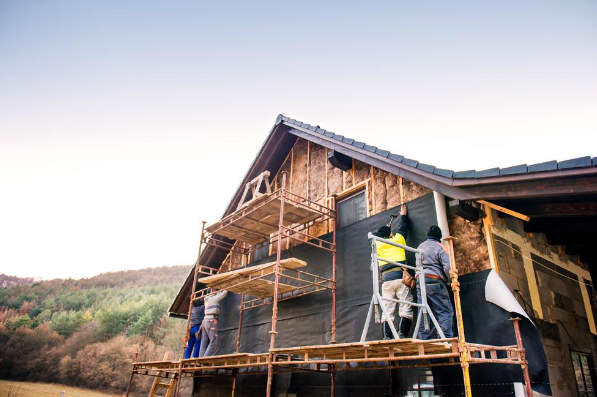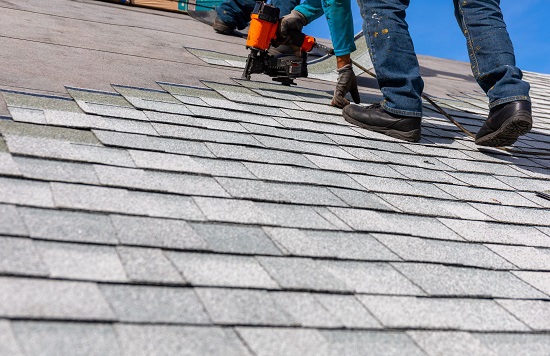As temperatures plummet and the outdoors turn frosty, our homes become sanctuaries where we seek comfort and warmth. Yet, for many homeowners, keeping indoor environments cozy can be a challenging—and sometimes costly—endeavor. The good news is that there are numerous home improvements you can implement to better retain heat, reduce energy expenditure, and ensure you and your family stay warm throughout the coldest months of the year.
Evaluate Your Roofing Situation
One essential step toward a warmer home is evaluating the quality of your roof. A properly maintained and insulated roof helps prevent heat from escaping and cold air from seeping inside. Upgrading the roofing materials or adding better insulation beneath the shingles can result in a cozier living environment. Improving your roof is not only beneficial for comfort but is also a focus of a thriving global industry. According to This Old House, forecasts suggest that the worldwide roofing market could reach roughly $156 billion by 2030, growing at about 4.3% per year from a 2021 baseline, indicating that homeowners and industry professionals alike see roofing as a key element in energy efficiency and comfort.
Upgrade Windows and Treatments
Beyond the roof, windows play a critical role in your home’s overall energy performance. If your current windows are single-pane or have deteriorated seals, they could be responsible for significant heat loss. Installing double- or triple-pane windows and adding proper weather-stripping are effective upgrades. Consider pairing these enhancements with high-quality window treatments. According to Mordor Intelligence, window treatments as a global market are anticipated to expand at about a 4.42% annual rate from 2022 to 2027, reflecting growing consumer interest in solutions that both improve aesthetics and support better insulation.
Address Heating Fuel Consumption
Your heating system’s fuel usage can shed light on whether it’s time to optimize how your home preserves warmth. Households relying on heating oil, for example, can see usage skyrocket during colder months. According to the U.S. Energy Information Administration, a homeowner in the Northeast might go through between 850 and 1,200 gallons of heating oil during a normal winter, then use very little the rest of the year, revealing how the cold season dramatically increases heating needs. By improving insulation, upgrading heating systems, or even considering alternative energy sources, you can help reduce that consumption—and the associated costs.
Seal Drafts and Add Insulation
Even small improvements can yield significant warmth and energy savings. Start by identifying and sealing drafts around doors, windows, and other openings. Weather-stripping, draft stoppers, and insulated door options can minimize unwanted airflow. Adding insulation to your attic, walls, and basement is also a highly effective way to maintain a stable indoor temperature. With proper insulation, you reduce the workload on your heating system, which in turn can translate into lower energy bills and a more comfortable home environment.
Incorporate Cozy Interiors
Beyond structural enhancements, smaller changes can contribute to a snug, welcoming atmosphere. Placing area rugs on hardwood or tiled floors provides an additional layer of insulation while creating a more comfortable surface underfoot. Thick curtains and layered textiles—such as blankets and plush throws—further trap warmth and add visual appeal. Rearranging furniture so that seating areas aren’t positioned directly next to exterior walls or drafty windows can also help maintain a more even distribution of warmth throughout your space.
Optimize Your Heating System
Finally, ensure that your heating system is operating at its best. Regular maintenance—such as cleaning or replacing air filters, sealing any duct leaks, and scheduling annual inspections—helps keep it running efficiently. If your furnace or boiler is outdated, consider upgrading to a modern, energy-efficient model. While the initial investment might be higher, the long-term savings and increased comfort can make it well worth the cost.
By strategically focusing on these key improvements—addressing roofing quality, enhancing windows and treatments, reducing heating fuel consumption, sealing drafts, incorporating cozy décor, and maintaining your heating system—you can transform your home into a winter haven. Achieving a warm and energy-efficient environment not only elevates everyday comfort but also positions you to save on energy costs and better withstand whatever winter weather comes your way.








